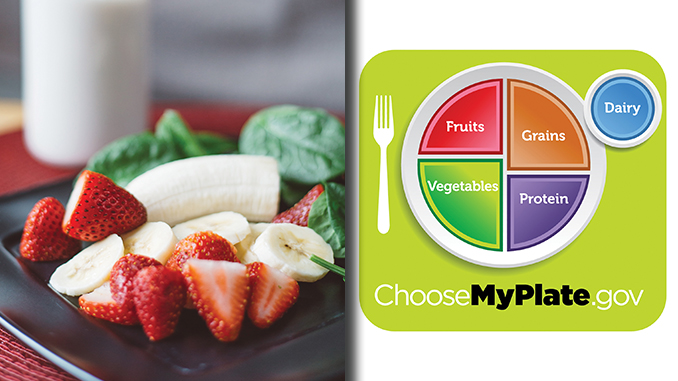
March is National Nutrition Month®
Published: March 1, 2021
By: Laura Marbury, MS, RDN, LDN
March is National Nutrition Month® and this year the Academy of Nutrition and Dietetics (http://www.eatright.org) is encouraging you to “Personalize Your Plate!” Developing a healthful eating pattern is not a one-size-fits-all endeavor. Everyone is different, and our choices are shaped by many factors. No matter your situation, there is more than one way to personalize your plate for healthful eating.
Choose a Variety of Foods
A healthy eating pattern includes a variety of foods from all food groups, according to the 2020-2025 Dietary Guidelines for Americans. Each food group offers a unique package of nutrients that, when combined, help you become healthier now and maintain your health for the future.
Avoiding food groups leaves nutritional gaps. For example, if you’re lactose intolerant you may be avoiding dairy foods, but dairy provides essential nutrients, including calcium, potassium and vitamin D, which people of all ages need for growth and maintenance. These nutrients also play a role in preventing chronic diseases like heart disease, diabetes, and obesity.
If you are lactose intolerant, personalize your plate by choosing aged cheeses, like cheddar or Parmesan, which contain nearly no lactose. You could also try fermented dairy foods, like yogurt or kefir, which contain beneficial bacteria that help you digest lactose. Choose lactose-free milk instead of milk impersonators, which do not offer the same package of nine essential nutrients as real cow’s milk.
Plan Ahead
Finding time to sit down for a well-balanced meal is often just as challenging as deciding what should be on your plate. Most Americans fall short when it comes to eating enough plants – fruits, vegetables, whole grains – and dairy foods, but planning a weekly menu will make healthful eating easier.
Check your schedule to determine how many meals you can realistically eat at home each week. Then choose healthful recipes that include a variety of food groups. Eating the MyPlate way (http://www.myplate.gov) can guide you. Aim to fill half of your plate with fruits and veggies, one-fourth with lean protein, such as chicken, seafood, beans, and nuts or seeds, and one fourth with whole grains. You can enjoy a cold glass of milk with your meal or add a serving of cheese or yogurt to your plate.
Learn New Skills
Make meal planning easier, help incorporate variety, and better suit everyone’s preferences by getting the whole family involved with planning and prepping each week. Encourage older kids to find fun recipes that explore new flavors and foods.
Make meals even easier on yourself by learning new cooking techniques that can minimize the amount of time and effort spent on preparation. One-pot meals, sheet pan dinners, and slow cooker or instant pot recipes are just a few cooking methods that can simplify family meals.
Laura Marbury, MS, RDN, LDN is a Food and Nutrition Outreach Manager for The Dairy Alliance.
